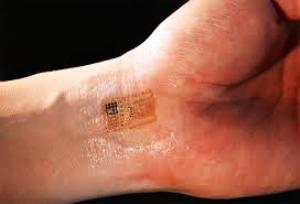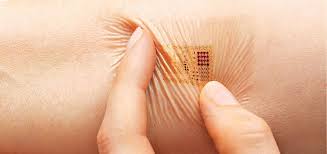Duplication and Expansion of Nano Chips and Microarrays in the Biological Structure of Lab-on-a-Chip (Based on Nano-Micro PhD)
Note: Duplication and deployment of nano-chips is a more specialized function of nano-chips or gene and protein microarrays containing markers against the entire human genome for genetic alteration studies.
Gene and protein microarrays in very small sizes with molecular detection capabilities based on DNA sequences and human proteins and other pathogens used for research.

Structure and Proliferation of Lab on a Chip Nanotubes by Integrating Molecular, Microelectronics,
With the proliferation of nano-chips and micro-elements of Lab on a chip, medical diagnostic laboratories are able to detect and measure hundreds of biological substances from blood cell counts to accurate blood factors and other body fluids and tissues, clinical pathology laboratories. Imaging systems such as radiology, ultrasound, endoscopy, computed tomography, MRI and other specialized diagnostic techniques for the treatment of various diseases such as angiography, echocardiography, electrocardiogram and other organs are highly developed. . With the development of human knowledge in the fields of cellular and molecular sciences, genetics and the identification of genes for various disease agents, genome sequencing of pathogenic agents, their comparison and comparison and the establishment of genomic databases, the development of molecular diagnostic methods, laboratories Specialists use these techniques to accurately diagnose infectious pathogens, certain genetic disorders, and even in cases of prenatal diagnosis of a possible fetal disease with severe hereditary diseases and fetal sex determination.

(Microarray Technology) Microarray technology Gene and protein arrays Although it has been several years since the structure of the human genome has been fully identified and sequenced, it has been found that the human genome is composed of 5 billion nucleotides and about 2,000 genes, but a major evolution in Solving hereditary diseases and discovering the causes of various human diseases have not been done due to the complexities of human genetic structure and the various factors affecting it. Previously it was thought that one gene was responsible for one activity and experts were examining the structure and function of individual genes and proteins separately, but it is now known that several genes have been implicated in some disorders and that a number of processes are involved in A disease or cellular damage and Tissues are involved. The result was that a method must be devised to simultaneously examine the sequence, diversity, gene variance, structure and activity of tens, hundreds, and thousands of proteins at a time.

By combining molecular technologies, microelectronics, robotics, nanotechnology, polymer chemistry and molecular interconnections , it has been possible to make hundreds and thousands of markers (probes) of different genes and proteins in very small quantities (nanoliters) using very fine needles. Finely attach to the surface of a microscopic glass slide in regular rows (arrays). In this way, by adding samples containing healthy and patient Protein-RNA-DNA, it is possible to investigate genetic changes in different genes and proteins .


